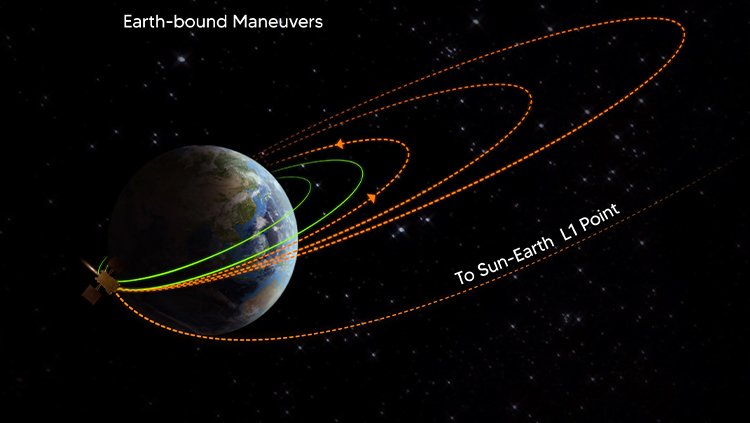Aditya L1 Completes Second Earth-bound Manoeuvre, Confirms ISRO
Isro's Aditya L1 Mission Achieves Success with Second Earth-bound Manoeuvre, Paving the Way for Solar Exploration Milestones and Scientific Discoveries.

India's pioneering solar mission, Aditya L1, marked a significant milestone with the successful execution of its second Earth-bound manoeuvre, as announced by the Indian Space Research Organisation (Isro) on Tuesday. Launched from Sriharikota on September 2, this mission is poised to deepen our understanding of the Sun.
Isro's Telemetry, Tracking and Command Network (ISTRAC) orchestrated the critical manoeuvre, which was met with success. During this operation, Aditya L1 was diligently tracked by Isro's ground stations in Mauritius, Bengaluru, and Port Blair, resulting in the spacecraft attaining a new orbit with dimensions of 282 kilometers by 40,225 kilometers.
Looking ahead, the third manoeuvre is scheduled for September 10 at approximately 2:30 am, aligning with the mission's meticulous timeline.
The Aditya L1 spacecraft will undergo two more earth-bound orbital manoeuvres before embarking on its journey to the Lagrange point L1 of the Sun-Earth system, positioned roughly 1.5 million kilometers from Earth. This strategic location offers an uninterrupted and unobstructed view of the Sun, rendering it an ideal vantage point for solar observation.
Anticipated to reach its designated orbit at the L1 point after approximately 127 days, Aditya L1's mission progress is closely monitored by the scientific community and space enthusiasts alike.
The maiden launch of Aditya L1 transpired from the Satish Dhawan Space Centre in Sriharikota on September 2. Weighing in at 1,472 kilograms, the spacecraft was gracefully propelled into space by the dependable Polar Satellite Launch Vehicle (PSLV) in 'XL' configuration, renowned as Isro's most reliable and versatile launch vehicle.
The primary scientific objective of the Aditya L1 mission revolves around an in-depth exploration of the Sun's upper atmospheric layers, with specific emphasis on the chromosphere and corona. Additionally, the mission aims to investigate coronal mass ejections (CMEs)—sizeable discharges of plasma and magnetic fields from the Sun's corona—alongside a comprehensive analysis of the corona's magnetic field, recognized as a key influencer of space weather phenomena.
The Aditya L1 spacecraft boasts an impressive payload, comprising seven instruments engineered for precise solar observation. Among these instruments, the Visible Emission Line Coronagraph (VLEC) stands out, facilitating the examination of the solar corona. Furthermore, the Solar Ultraviolet Imaging Telescope (SUIT) is designed to capture UV images of the solar photosphere and chromosphere, while the Solar Low Energy X-ray Spectrometer (SoLEXS) and High Energy L1 Orbiting X-ray Spectrometer (HEL1OS) are dedicated to the analysis of X-ray flares.
The successful execution of the second Earth-bound manoeuvre marks a pivotal step in Aditya L1's journey to unravel the mysteries of our Sun. With each accomplishment, the mission brings us closer to a deeper understanding of our solar neighbor and its impact on our planet and beyond.

 Sumit Rawat
Sumit Rawat 










